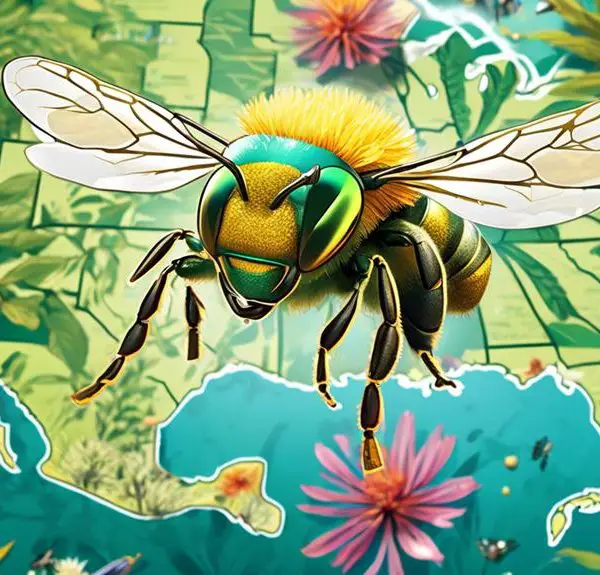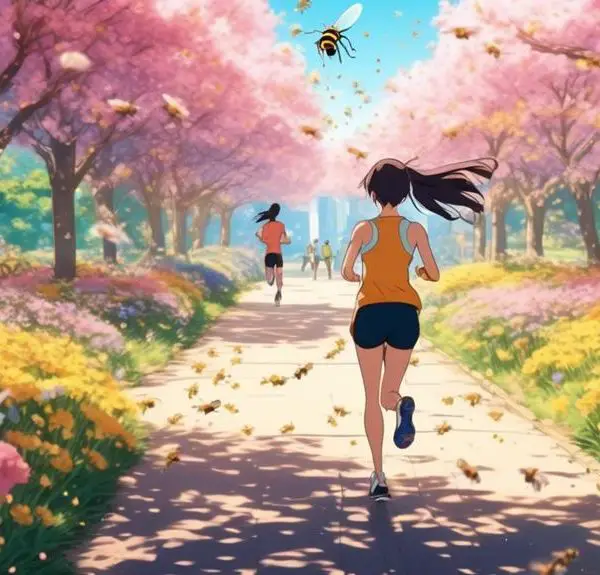Bees in green? Delve into the intriguing reason behind the unique emerald hue of sweat bees.
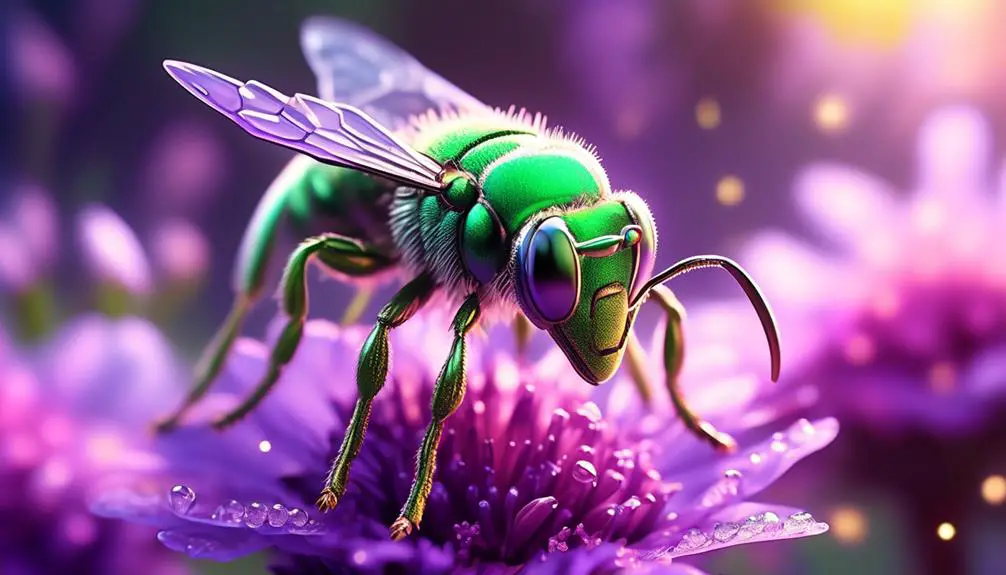
Why Are Sweat Bees Green
Imagine a world where every bee you encounter is the same monotonous black and yellow. Wouldn't that be dreadfully dull? Luckily, nature's got your back, and it's thrown in a splash of green for good measure with the fascinating sweat bee.
But have you ever wondered why these tiny creatures are emerald in color? The answer to this may seem simple on the surface but, you'll find, it's a complex blend of science, evolution, and a dash of Mother Nature's whimsy.
So, why wait? Let's plunge into the captivating world of sweat bees and unravel the mystery behind their unique green hue.
Key Takeaways
- Sweat bees appear green due to structural coloration in their exoskeleton.
- The green color helps sweat bees blend into their leafy environments and attract mates.
- The green pigmentation provides camouflage against predators and aids in thermoregulation.
- Being green is an evolutionary strategy for survival, energy optimization, and reproductive success.
Understanding Sweat Bees
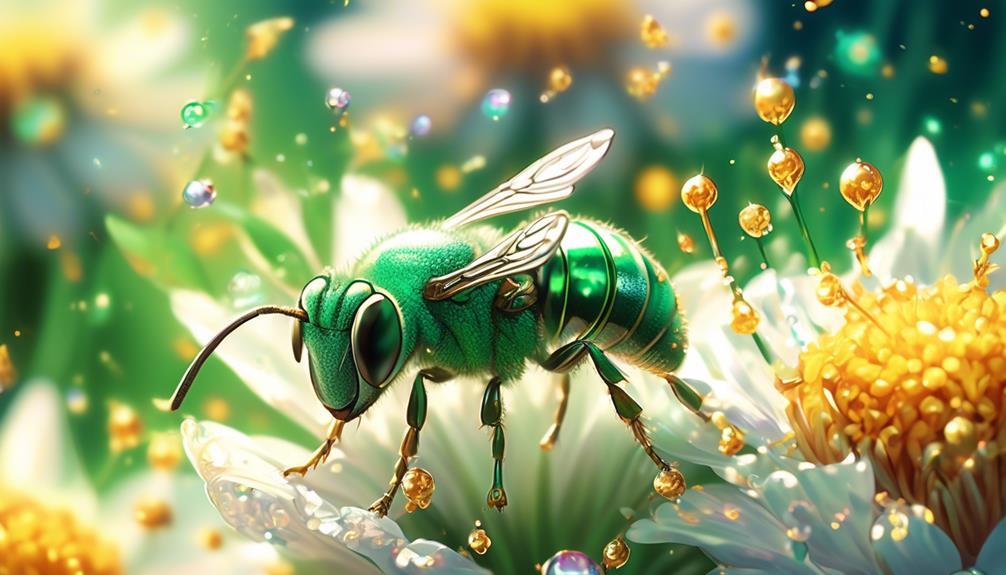
To fully appreciate sweat bees, it's essential to delve into their unique behavior, lifecycle, and their often misunderstood relationship with humans. Unlike their honeybee counterparts, sweat bees live solitary lives. They nest in the ground and aren't part of large colonies. You'll often find them buzzing around your garden, pollinating your flowers.
Their lifecycle is also fascinating. Female sweat bees lay their eggs in the fall, and their offspring emerge in the spring. They're not aggressive by nature, but they can sting if they feel threatened. But don't worry, their sting is far less painful than that of a honeybee.
The term 'sweat bee' might've you scratching your head. It's because these bees are attracted to human sweat. It's not that they want to harm you, they're simply after the salts in your sweat.
Humans often misunderstand these small, metallic green or blue creatures. They're not out to get you. Instead, they're important pollinators and play a crucial role in our ecosystem. So next time you see one, don't be afraid. Take a moment to admire its iridescent colors and remember the important job it's doing.
The Science of Color in Insects

Ever wondered why sweat bees, among many other insects, sport such vibrant, metallic colors? It's all down to the science of color in insects.
You see, insects don't produce pigments for green, blue, or violet the way humans do. Instead, they use structural coloration.
Structural coloration is a process where the structure of an insect's exoskeleton bends and reflects light to produce color. The structures are microscopic and layered in such a way that they interfere with the light that hits them. Depending on how the layers are arranged, they'll reflect different wavelengths of light. That's why you see those shimmering, metallic hues on sweat bees and other insects.
This color isn't just for show, either. It serves a purpose in the insect world. For sweat bees, the green color helps them blend into their leafy surroundings, making them less noticeable to predators.
Green Pigmentation in Sweat Bees

Diving into the world of sweat bees, you'll find that their green pigmentation plays a crucial role not only in camouflage but also in their survival and reproduction. This green coloration is a result of structural coloration, a process where the structure of an organism's surface rather than pigmentation creates color.
So, how does this work? Microscopic structures on the bees' exoskeleton reflect and refract light in a way that makes them appear green. This isn't just for show. It's a survival mechanism. The green hue helps these bees blend into their leafy environments, making them less noticeable to predators.
But that's not all. The green pigmentation also plays a role in attracting mates. In many sweat bees species, it's the males that are brightly colored, using their radiant green to woo females.
Ultimately, the green pigmentation of sweat bees isn't just a simple matter of aesthetics. It's a complex interplay of survival, species recognition, and mate attraction. So, next time you spot a sweat bee buzzing around, remember there's more to their color than meets the eye.
Evolutionary Benefits of Green Coloration
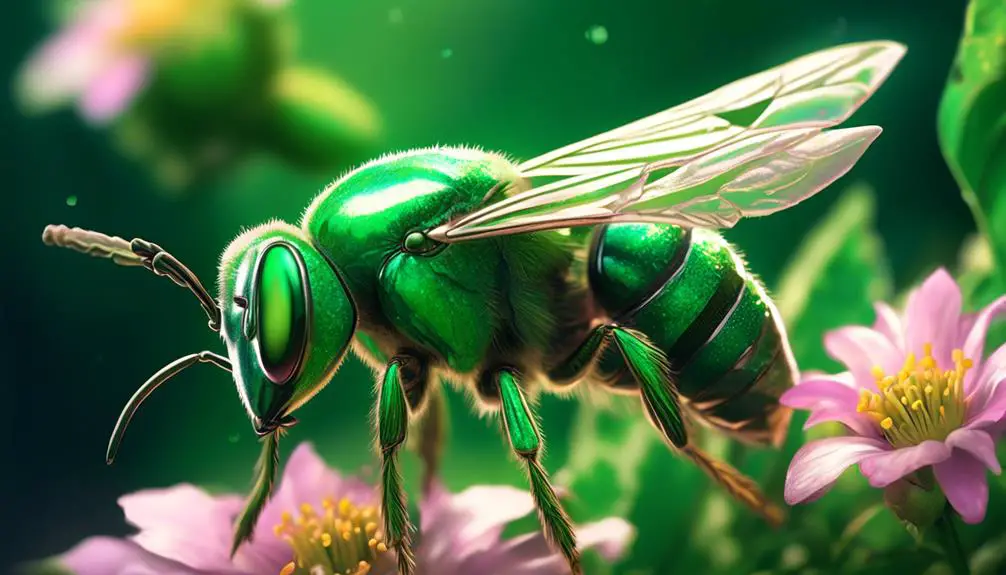
In the grand dance of evolution, the green coloration of sweat bees has proven to be a powerful tool for survival and reproduction. Imagine you're a tiny sweat bee buzzing around in a sea of green foliage. Your green hue blends you seamlessly into this environment, providing you a shield against predators. That's nature's camouflage at its best.
But it's not just about hiding. This green coloration also has a part to play in attracting mates. It's like wearing a bright sign that says, 'Here I am! I'm fit, healthy, and ready to mate.' You'd be the belle of the bee ball!
Furthermore, the green pigmentation helps in thermoregulation. As a cold-blooded insect, you depend on external heat sources to regulate your body temperature. Your green color absorbs sunlight, warming you up, and thus, allowing you to be more active.
In essence, being green is being smart. It's a winning ticket in the lottery of life, ensuring your survival, facilitating reproduction, and optimizing your energy use. So, you see, the sweat bee's green coloration isn't just about aesthetics. It's a masterstroke of evolutionary strategy, ensuring the survival of the species.
Unique Behavior of Sweat Bees
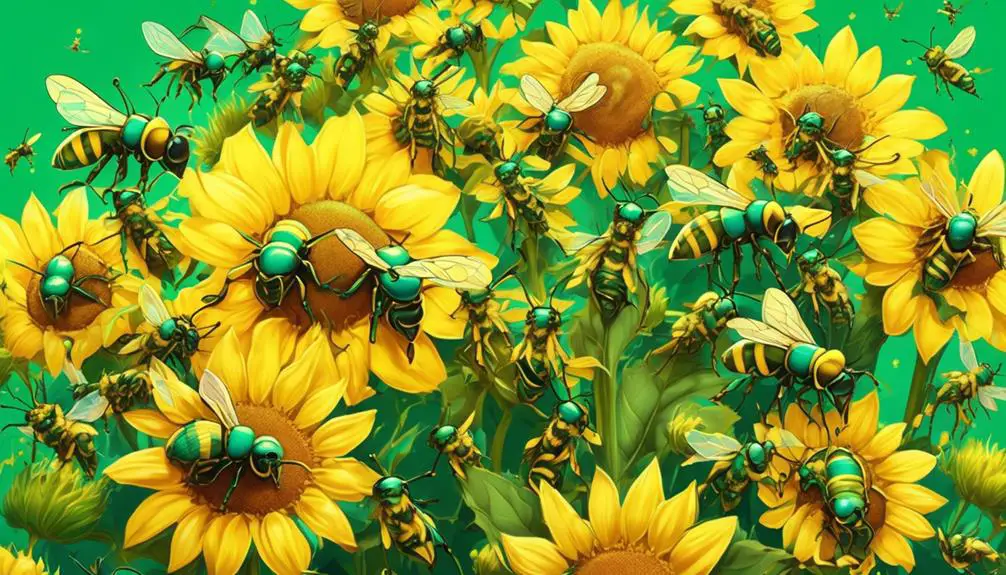
Beyond their striking color, sweat bees exhibit some fascinating behaviors that set them apart from their bee brethren. You'll be intrigued to know that unlike most bees, sweat bees are both solitary and social creatures. While some prefer to live alone, others form small colonies, showcasing a distinct aspect of their behavior that's not common in the bee world.
Their name, 'sweat bees', isn't randomly assigned. They're attracted to human perspiration, which they consume for its salt content. So, if you're sweaty and a small green bee lands on you, don't panic! It's probably just a sweat bee looking for a snack.
Sweat bees also exhibit unique nesting behaviors. They burrow into the ground or wood to create their nests, rather than building the typical honeycomb structures you'd associate with bees. And, unlike their more famous cousins, they don't produce honey.
Lastly, their mating behaviors are also quite peculiar. Only the mated females survive the winter, burrowing deep into the ground to hibernate, emerging in the spring to lay their eggs. It's this cycle of life that ensures the survival of these intriguing little creatures.
Conclusion
So, now you know why sweat bees are green. It's all about the science of insect color, the unique green pigmentation, and the evolutionary benefits this color offers.
Their green hue isn't just for show, it plays a vital role in their survival. Plus, it makes them one of the most distinctive bees around.
So, next time you spot a green glint in your garden, spare a thought for the fascinating world of sweat bees.

